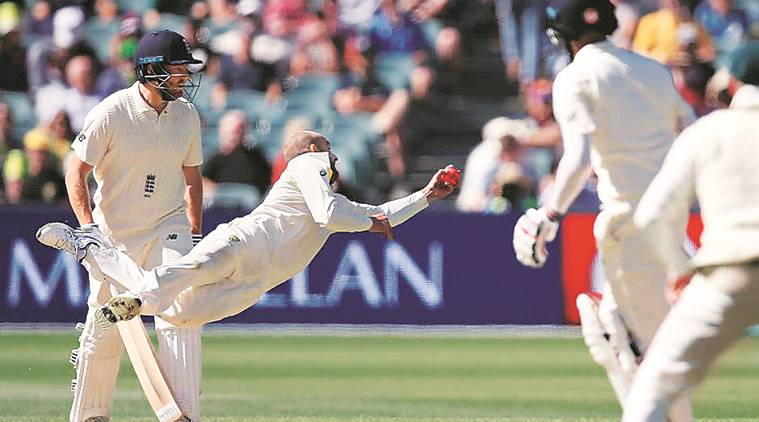
A pink-ball oddball: Spinners redundant in this genre of the game?
The first pink-ball Test in India could be (mis) construed as a
vindication of the spinners’ redundancy in this genre of the game. For
the first time ever in the history of Indian cricket, their spinners
went wicketless. It also had to do with the fact that they barely
bowled: seven overs across both innings. Among the 29 wickets to have
fallen in the match, only one went to the spinner (Taijul Islam
dismissing
Ajinkya Rahane
on Day 2), reiterating the perception that pink-ball cricket is
overwhelmingly skewed in favour of the faster men. While it’s true that
seamers get better purchase, the spinners, especially those using their
fingers, aren’t a peripheral force. Ask Nathan Lyon.
Superb Lyon
In fact, the Australian off-spinner, who will be in action against
Pakistan in the day-night Test beginning in Adelaide on Friday, average
better with the pink ball than the red cherry. In five Tests, he has
nabbed 17 wickets at 28, and including Sheffield games, he has bargained
29 scalps in nine games, at 27.55. It has not been a case of him
slicing through a softened-up lower order after the pacemen had slit the
top and middle orders, as is often assumed. Rather a bulk of those
wickets have been specialists batsmen (13 off the 17, though it’s not a
coincidence that ten of them were lefties). It includes some of the
better players of spin, such as Alastair Cook (twice in the same Test in
2017-18), Dimuth Karunaratne, Babar Azam, Younis Khan, Temba Bavuma and
Jean-Paul Duminy. And, on most instances, he has bowled as many overs
as the seamers, superbly blending the strike-stock bowling duties. He
ties up one end and picks wickets as well — under natural lights as well
as floodlights.
Seam advantage
Theoretically, the pink ball is designed to make life difficult for
the finger spinners, a reason wrist-spinner Kuldeep Yadav’s name was
doing the rounds for the Kolkata Test. The ball is heavier, tends to get
softer quite rapidly, making it difficult to grip. Naturally, it
becomes difficult to purchase over-spin, a finger-spinner’s chief weapon
in Australia. Consequently, less bounce too. But Lyon spots a blessing
in disguise. “It’s hard to detect the seam under the lights. So it works
for me, and I could experiment more with the seam positions,” he had
said after the Ashes Test against England two seasons ago.
Subtle adjustments
Though he swears by the usual sporting truism of
practice-for-perfection, he has incorporated subtle tweaks into his
methods. For instance, he tends to flight the pink-ball more, gets more
inward drift (and it has helped that most of the day-night games are
played in Adelaide where the cross-wind is as permanent a feature as the
Cathedral and the River Torrens), is slower through the air and imparts
more revs on the ball. He gets more shoulder into the action, and hence
he manages more turn than with the red Kookaburra. That he has been
massively successful with the pink-ball is a testimony to his
adaptability, as much as the utter mastery of his craft.
Neither a friend nor an enemy
The pink ball isn’t a spinner’s best friend. Neither is it a sworn
enemy. Those shrewd enough have found means to bargain wickets. In their
first day-night Test, Sri Lanka’s finger spinners, Rangana Herath and
Dilruwan Perera, bowled beautifully — picking six wickets among them —
to disarray Pakistan in Abu Dhabi and fashion a famous win. Discarded
Australian left-arm spinner Steve O’Keefe has evolved into the most
feared pink-ball destroyer in the domestic circuit (18 wickets at
18.22). And for all their deep pockets of fast-bowling wickets,
Pakistan’s most successful pink-ball bowler has been leg-spinner Yasir
Shah (17 wickets and two five-fors, though bleeding 37 runs for each).
Shah, after his first experience of the pink ball, had said that he
could grip the ball better and purchase more bounce. So fundamentally,
it’s more about the quality of a bowler than the type of bowler he is.
So amidst a raft of thrilling pacemen from either side, Lyon and Shah
wouldn’t be merely making up the numbers.

No comments:
Post a Comment